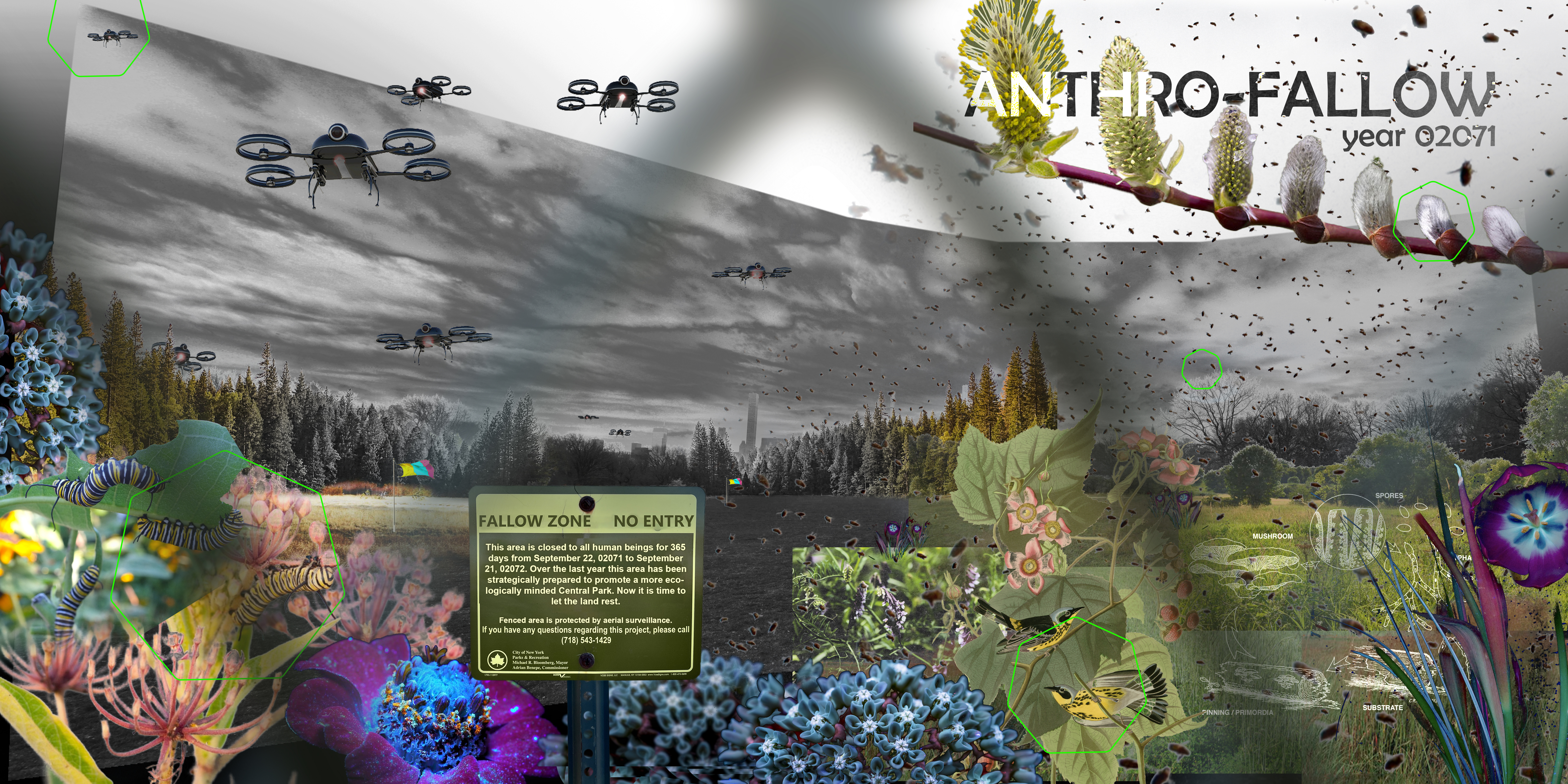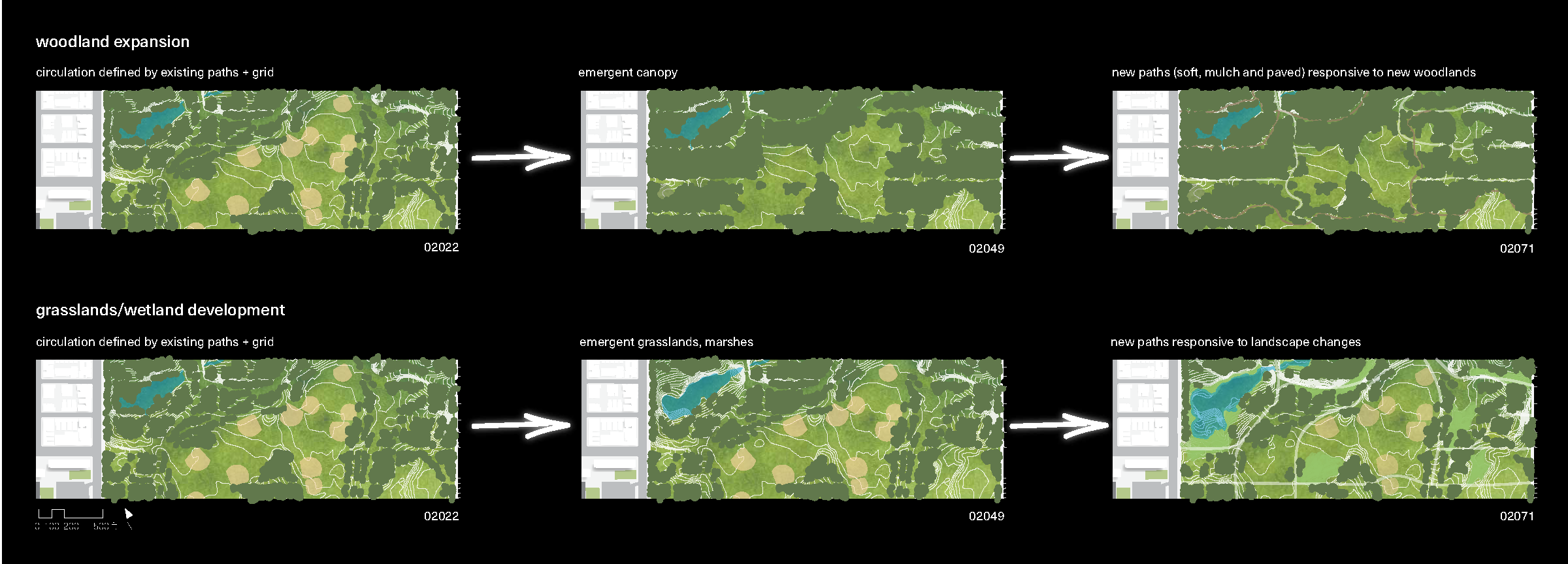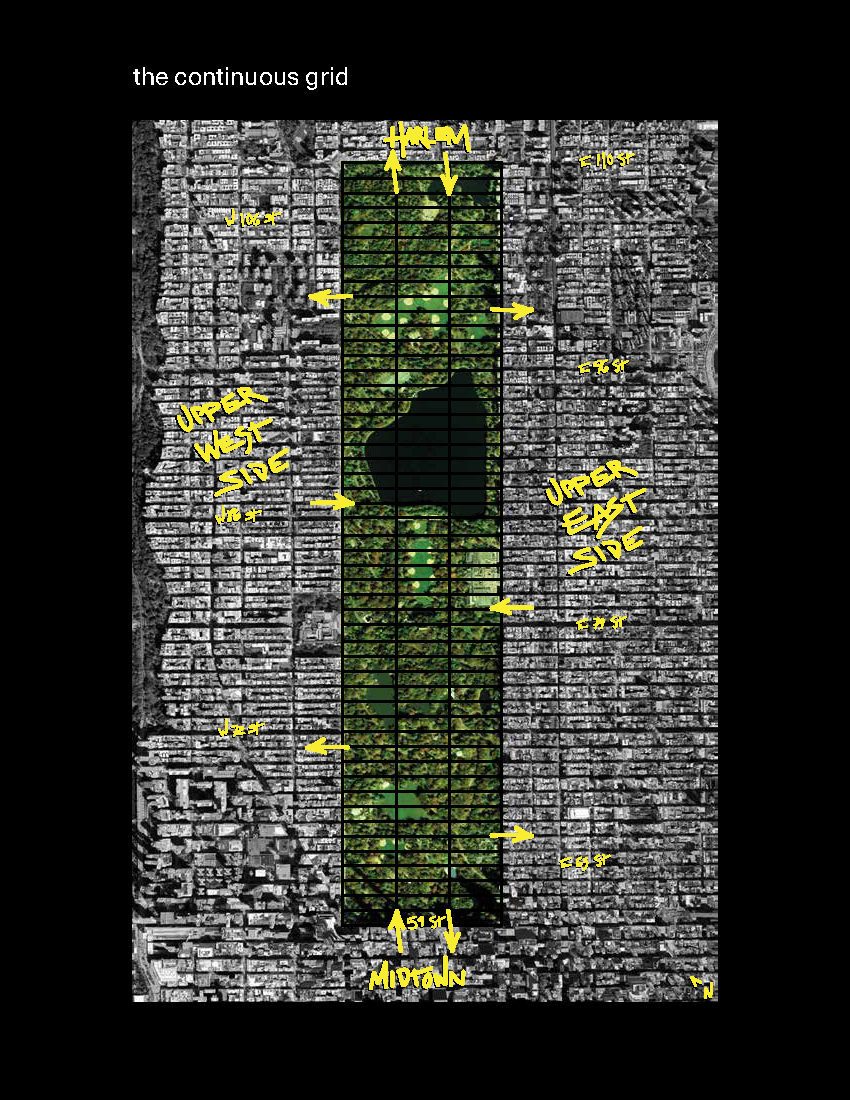Design Computation [20FL UVA]
Department of Landscape Architecture
Department of Archtiecture
University of Virginia School of Architecture
Fall 2020
Collborators: Xun Liu, Katie Stranix
Computation has a profound impact on a contemporary understanding of architectural and landscape architectural form,space and structure. It shifts the way in which form is perceived, purposed and produced. This course introduces new conceptual frameworks on computational thinking, spatial structures and associative modeling in conjunction with long-standing architectural techniques, technologies and software workflowsfundamental to the design process. It will investigate the potential of algorithmic logics for computational design and provide a new method to explore spatial organization.
This course will give students introduction to geometrical and terrain modeling in Rhino and Grasshopper, representational strategies in Adobe Photoshop and Illustrator, and the workflows between different softwares. Through a series of lecturesand interactive lab sessions accompanied by readings and exercises, students will gain technical fluency while also building a strong critical framework for understanding how computation has historically and presently informed design in both architecture and landscape architecture.
Learning Objectives
Module 01: Translate & Transform (5 weeks)
Module 02: Amend & Associate (5 weeks)
Module 03: Interpolate & Hybridize (4 weeks)
Assignments
A series of three cumulative assignments, each supplemented by a series of weekly exercises, build fluency in a wide range of computational methodologies. More detail about each assignment and its weekly exercises will be distributed with individual assignment briefs.
Training + Tutorials
Pre-lab tutorials and weekly exercises will strive to provide a strong foundation in geometrical modeling and computational design techniques. However, it is impossible to cover every technique and aspect of the software in class. Therefore, students will be expected to make use of available online materials such as video tutorials to supplement the exercises and tutorials in this course. The following resources are recommended resources, however you are welcome to use other resources as well.
Department of Landscape Architecture
Department of Archtiecture
University of Virginia School of Architecture
Fall 2020
Collborators: Xun Liu, Katie Stranix
Computation has a profound impact on a contemporary understanding of architectural and landscape architectural form,space and structure. It shifts the way in which form is perceived, purposed and produced. This course introduces new conceptual frameworks on computational thinking, spatial structures and associative modeling in conjunction with long-standing architectural techniques, technologies and software workflowsfundamental to the design process. It will investigate the potential of algorithmic logics for computational design and provide a new method to explore spatial organization.
This course will give students introduction to geometrical and terrain modeling in Rhino and Grasshopper, representational strategies in Adobe Photoshop and Illustrator, and the workflows between different softwares. Through a series of lecturesand interactive lab sessions accompanied by readings and exercises, students will gain technical fluency while also building a strong critical framework for understanding how computation has historically and presently informed design in both architecture and landscape architecture.
Learning Objectives
- To expand on the architectural techniques of observation, translation, abstraction and notation covered in the Summer Design Institute through additive and associative modeling of sites and geometries.
-
To contextualize contemporary computational design methods within a critical, historical framework to build an understanding of the evolving role of technology in the
design process.
- To introduce students to design tools and methods that promote computational and systems thinking while simultaneously cultivating a practice of self-learning, experimentation and discovery.
- To equip students with the technical and representational skills to better realize and render their designs while giving them the opportunity to discover and test formal and representational strategies outside of a studio setting.
Module 01: Translate & Transform (5 weeks)
-
Precedent Research
-
2D to 3D Translation
-
Intro to Geometrical Modeling(GH & Rhino Curve, Surface, Solid Tools)
- Intro to Representational Techniques (Rhino-Adobe Workflow)
Module 02: Amend & Associate (5 weeks)
-
Moving from Additive to Associative Design
-
Algorithmic & Systems Thinking
-
Working with Constraints
Module 03: Interpolate & Hybridize (4 weeks)
-
Responding to Context
- Hybridizing Elements into a Cohesive System
Assignments
A series of three cumulative assignments, each supplemented by a series of weekly exercises, build fluency in a wide range of computational methodologies. More detail about each assignment and its weekly exercises will be distributed with individual assignment briefs.
-
Assignment 01 - Translate & Transform
-
Assignment 02 - Amend & Associate
-
Assignment 03 - Interpolate & Hybridize
Training + Tutorials
Pre-lab tutorials and weekly exercises will strive to provide a strong foundation in geometrical modeling and computational design techniques. However, it is impossible to cover every technique and aspect of the software in class. Therefore, students will be expected to make use of available online materials such as video tutorials to supplement the exercises and tutorials in this course. The following resources are recommended resources, however you are welcome to use other resources as well.
Student Works


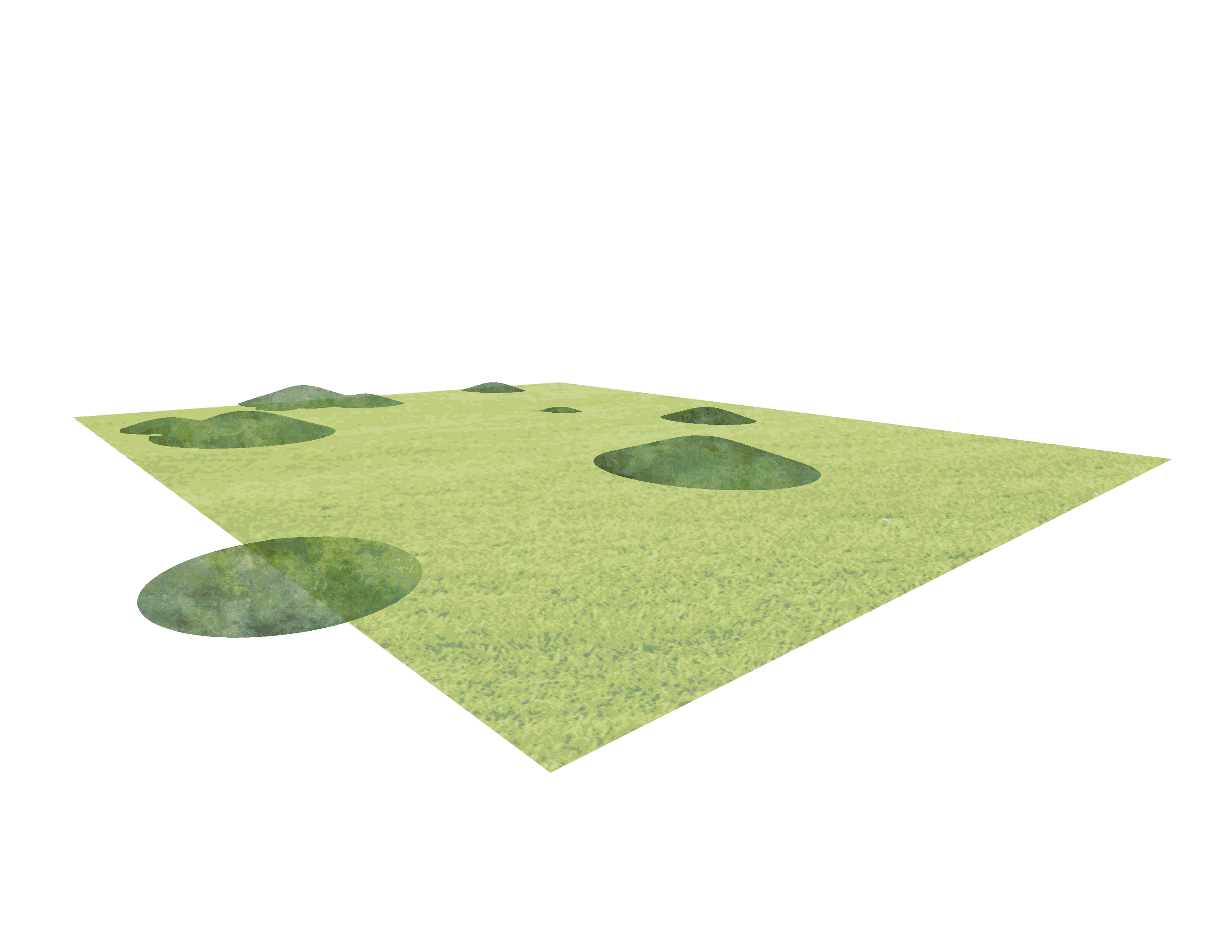

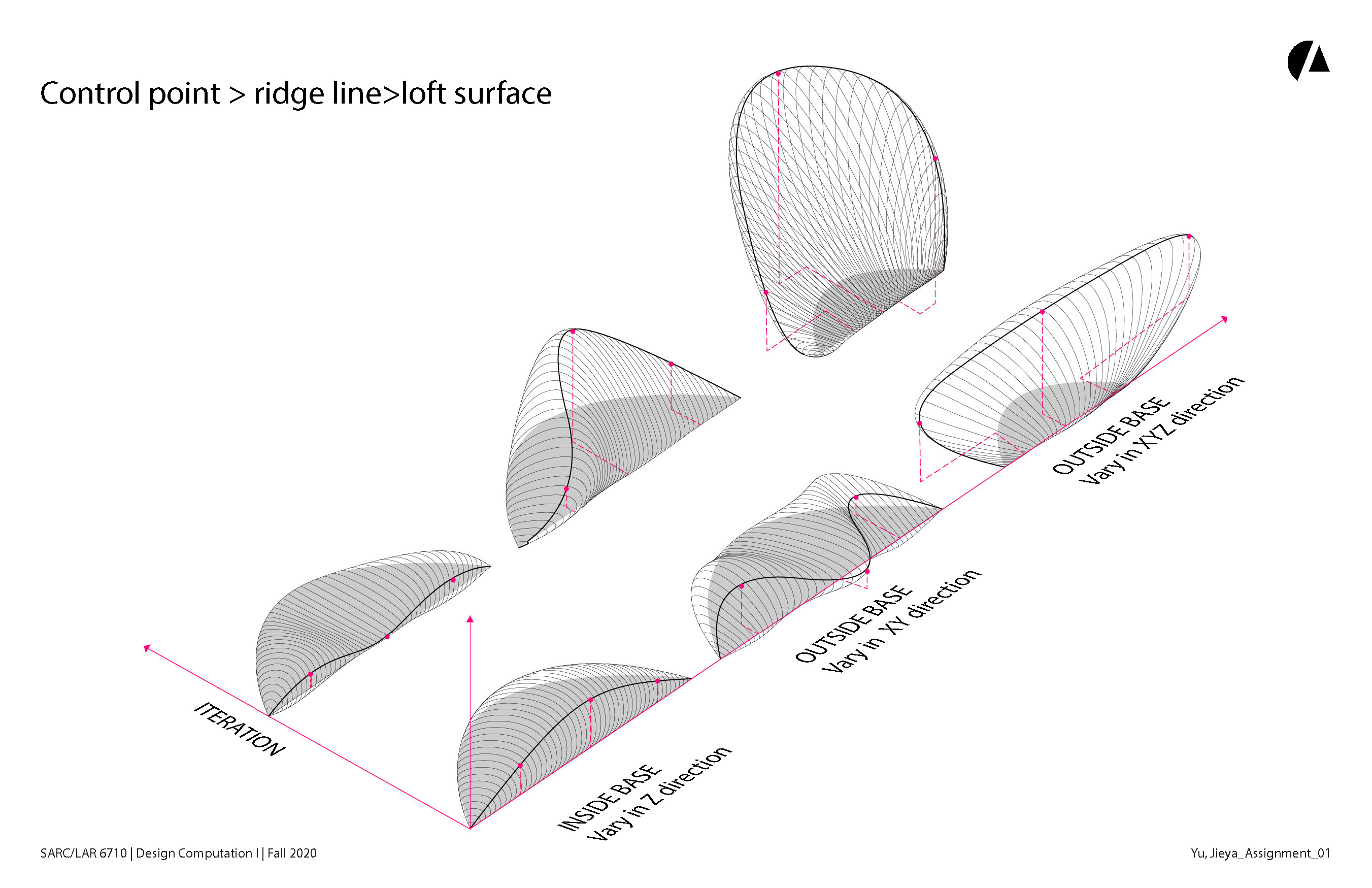

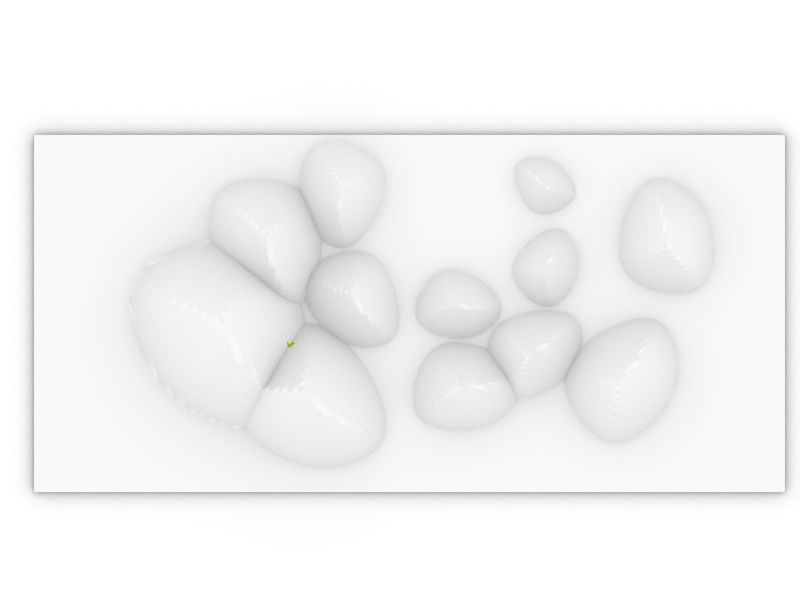

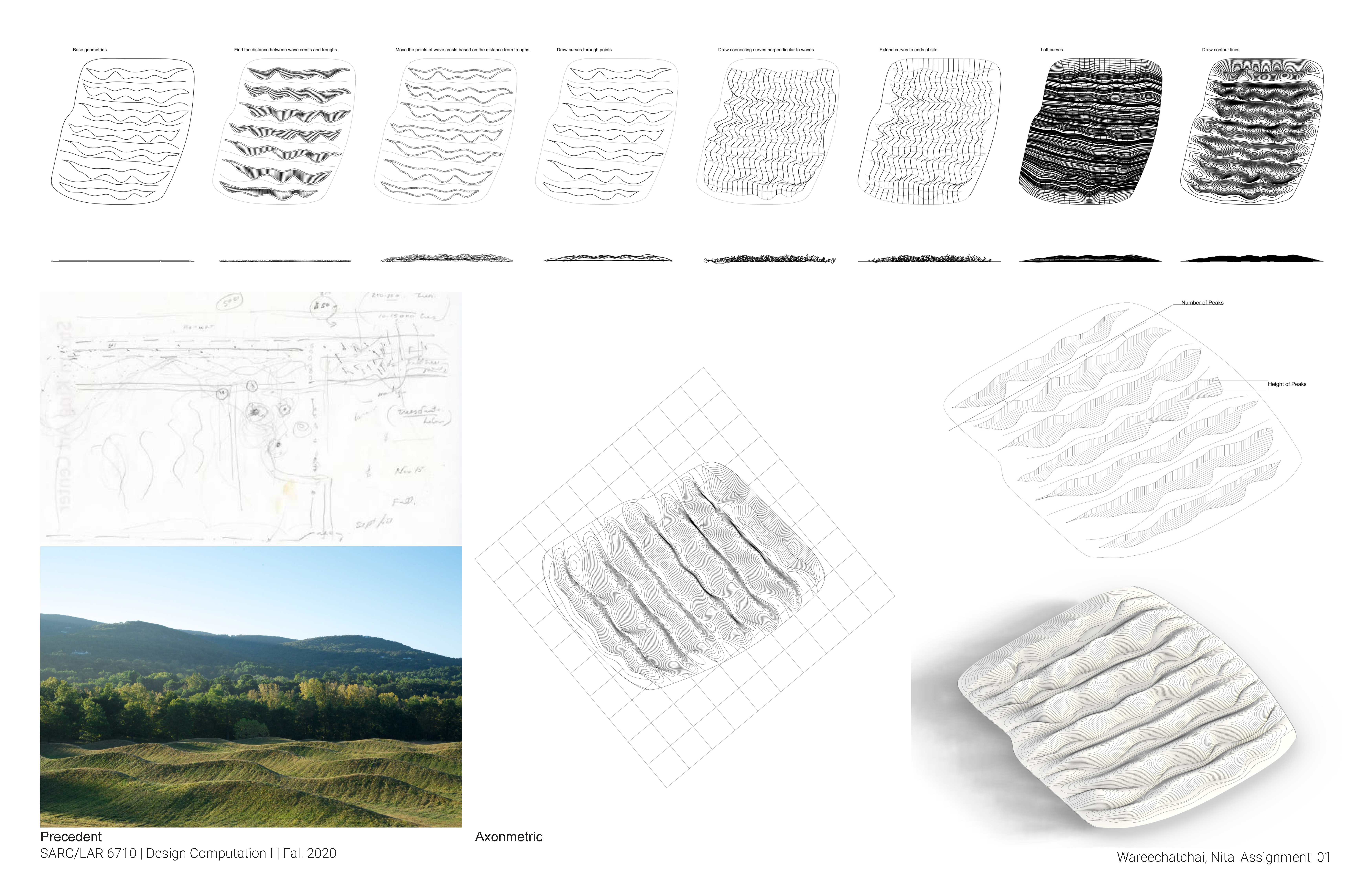
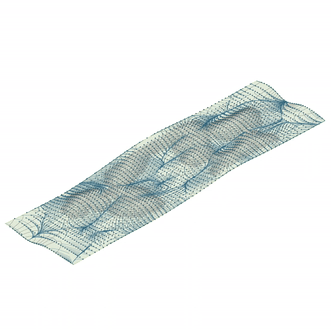
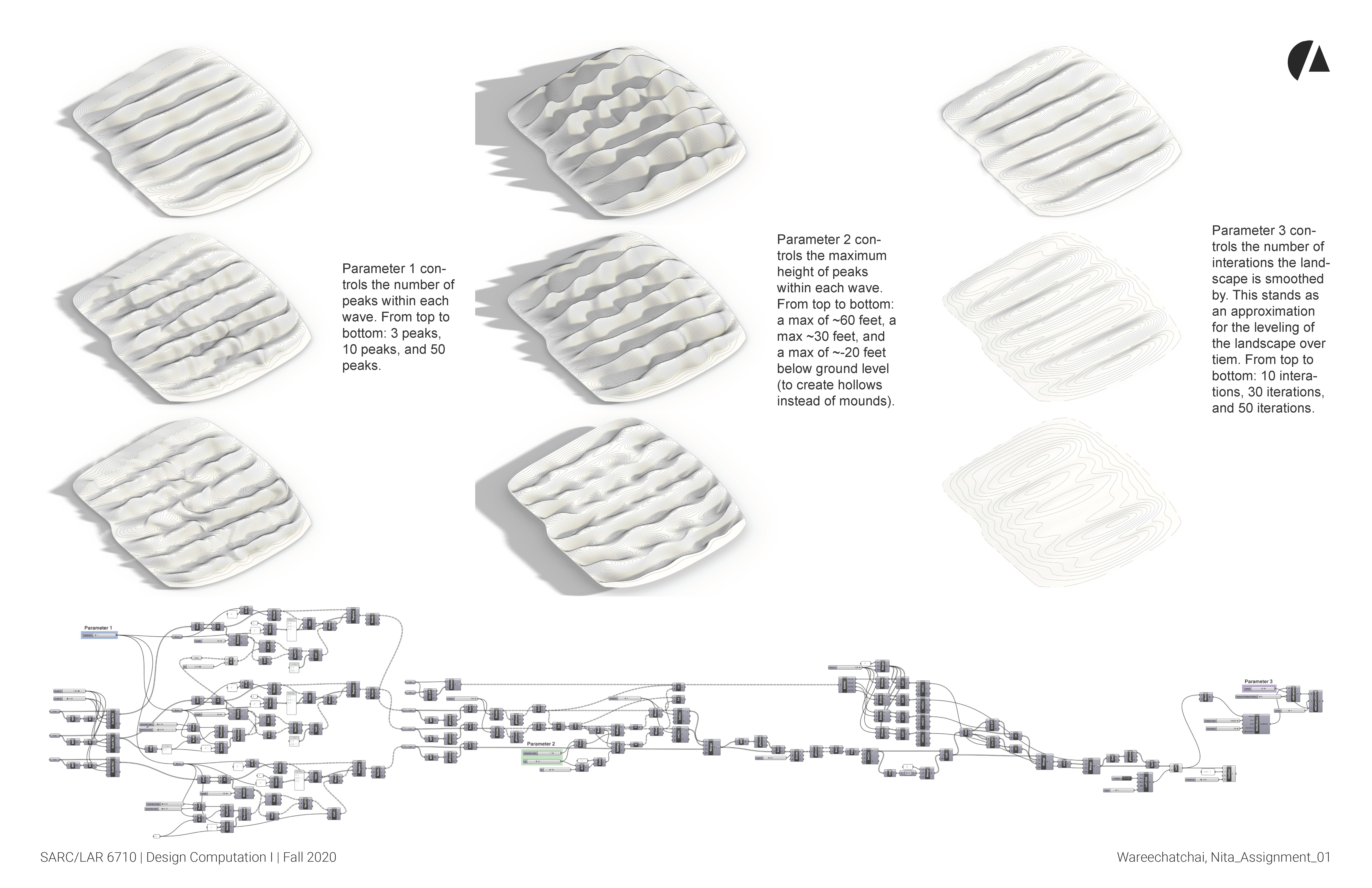
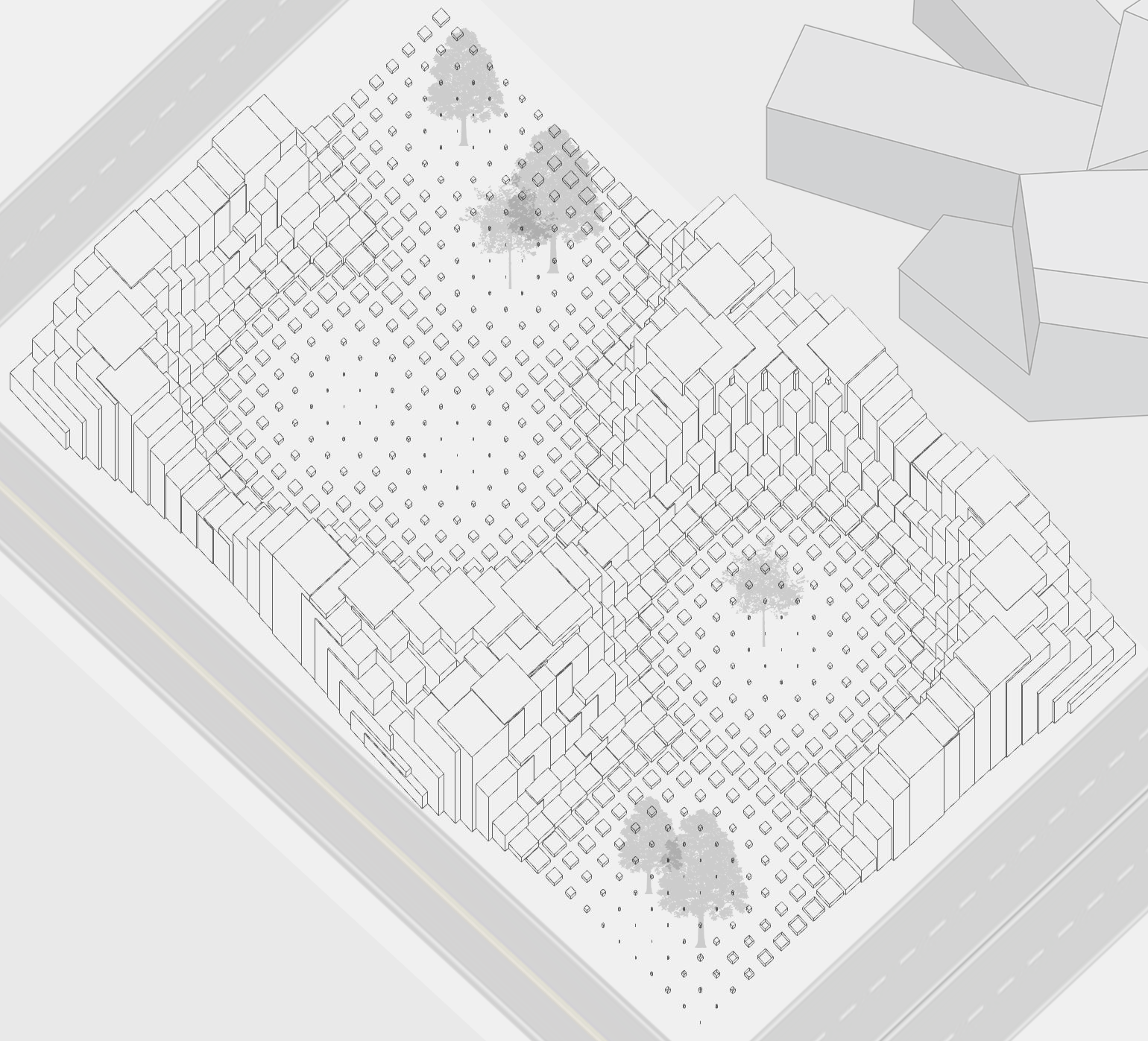
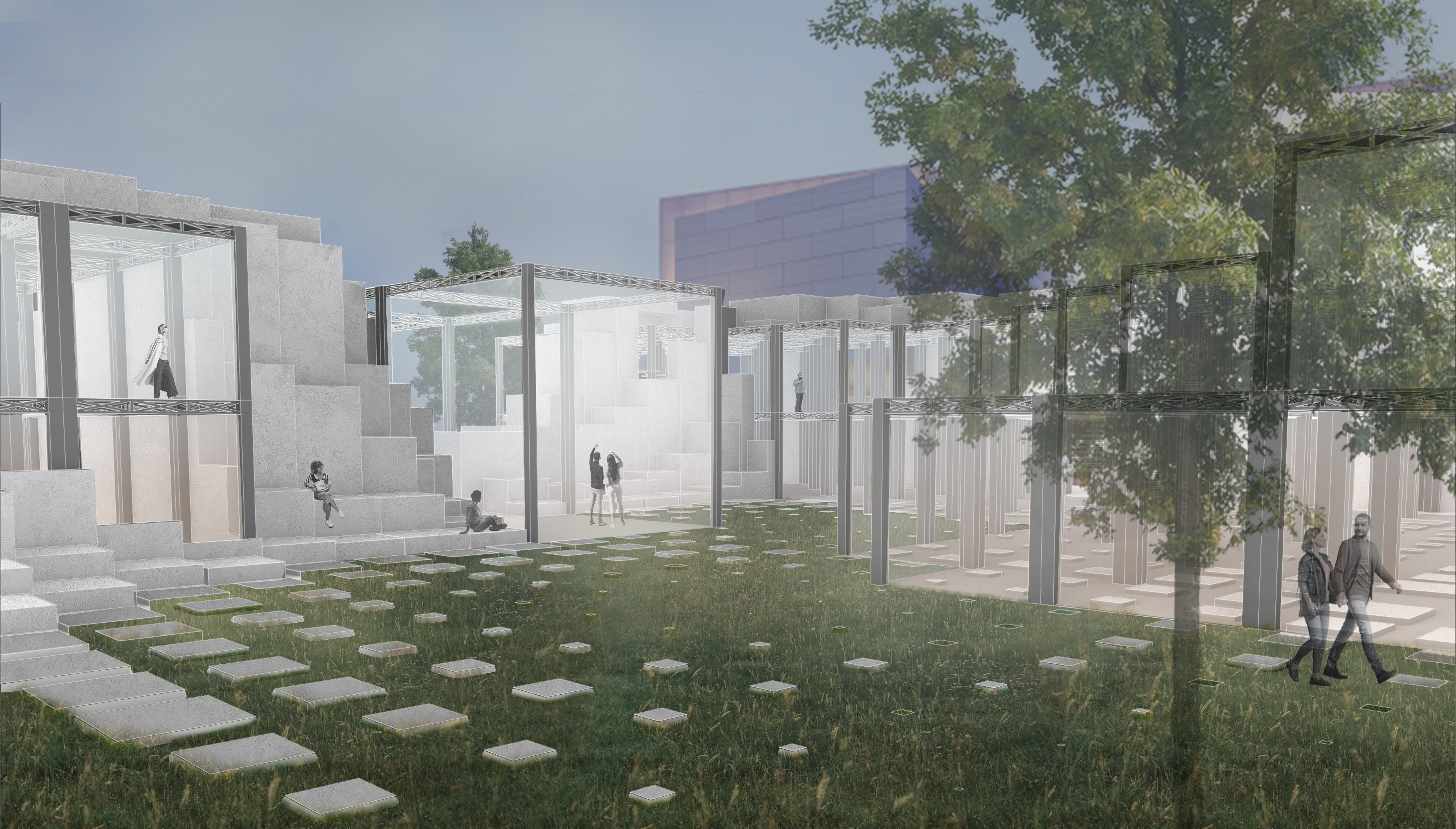
Design Computation [19FL UVA]
Department of Landscape Architecture
University of Virginia School of Architecture
Fall 2019
In the past few years, the environmental management discourse has seen an emerging paradigm of research and practice that revolves around cybernetic technologies and computational methods in regulating, controlling, and managing environmental processes. Concepts such as smart cities, responsive landscapes, sensing networks, machine learning, artificial intelligence, and cyberphysical systems have been popularized in the design professions. Many hope to use these strategies to avert myriads of environmental problems induced by climate change. These efforts are giving rise to a new paradigm of design and research— the cybernetic environment. Given this broader context, the next generation of landscape architects should not only learn digital tools and techniques that are central to the design professions but also be exposed to the history and theory of systems thinking that underpins the cybernetic environment paradigm.
This course is a combination of theory and practice reflected in two parts: lectures and workshops. In the lectures, students will explore the history and theory of design computation and contemporary discourses around computational thinking. The lectures map out a theoretical terrain by tracing the history of cybernetics and expose students to a set of ideas rooted in systems theory, posthumanism, and science, technology and society (STS), etc. These ideas will help students build reflexivity by deepening their understanding of subjectivity in the modeling process, the limitation of systems thinking itself, and -the social construction of spatial data and a cybernetic environment.
In the workshops, students will learn hands-on skills of computer-aided design tools, including Rhino and Grasshopper. Students will also explore different modeling and simulation techniques. Models here are in their broadest sense, including architectural models and numerical representations of environmental phenomena and processes. Through hands-on exercises, students will learn tools and, most importantly, understand how different software manages data and represents geometries differently, forming a critical lens of how computation structures information and constructs the environment in a profound way.
Course Objectives
The course allows students to:
These abilities are crucial for the next generation of designers to challenge the deterministic and linear way of thinking that is still a dominant paradigm in contemporary environmental practices and explore strategies of indeterminacy and recursive processes needed when humanity is faced with unprecedented environmental uncertainties such as climate change.
The course relies largely on Grasshopper as a way to introduce computational thinking. However, students must use other software including ArcMap, AutoCAD, Rhino, Photoshop, Illustrator and InDesign throughout the course. The drawings submitted in each module should be carefully edited and polished outside Grasshopper and Rhino in order to be clear and legible. This process may include changing line weights, and adding in details, notations, and legends, etc. Legibility and clarity of the works are expected in this course.
Four Modules
![]()
Department of Landscape Architecture
University of Virginia School of Architecture
Fall 2019
In the past few years, the environmental management discourse has seen an emerging paradigm of research and practice that revolves around cybernetic technologies and computational methods in regulating, controlling, and managing environmental processes. Concepts such as smart cities, responsive landscapes, sensing networks, machine learning, artificial intelligence, and cyberphysical systems have been popularized in the design professions. Many hope to use these strategies to avert myriads of environmental problems induced by climate change. These efforts are giving rise to a new paradigm of design and research— the cybernetic environment. Given this broader context, the next generation of landscape architects should not only learn digital tools and techniques that are central to the design professions but also be exposed to the history and theory of systems thinking that underpins the cybernetic environment paradigm.
This course is a combination of theory and practice reflected in two parts: lectures and workshops. In the lectures, students will explore the history and theory of design computation and contemporary discourses around computational thinking. The lectures map out a theoretical terrain by tracing the history of cybernetics and expose students to a set of ideas rooted in systems theory, posthumanism, and science, technology and society (STS), etc. These ideas will help students build reflexivity by deepening their understanding of subjectivity in the modeling process, the limitation of systems thinking itself, and -the social construction of spatial data and a cybernetic environment.
In the workshops, students will learn hands-on skills of computer-aided design tools, including Rhino and Grasshopper. Students will also explore different modeling and simulation techniques. Models here are in their broadest sense, including architectural models and numerical representations of environmental phenomena and processes. Through hands-on exercises, students will learn tools and, most importantly, understand how different software manages data and represents geometries differently, forming a critical lens of how computation structures information and constructs the environment in a profound way.
Course Objectives
The course allows students to:
-
Gain interactional expertise in scientific and engineering professions in order to conduct constructive conversations and collaborate with scientists and engineers.
-
Learn terminologies and concepts that are necessary to understand emerging scientific and engineering research.
-
Be able to critically examine cybernetic technologies and understand their premises, assumptions, and limitations.
-
Develop alternative approaches to modeling, simulation, and responsive tools with landscape sensibility.
These abilities are crucial for the next generation of designers to challenge the deterministic and linear way of thinking that is still a dominant paradigm in contemporary environmental practices and explore strategies of indeterminacy and recursive processes needed when humanity is faced with unprecedented environmental uncertainties such as climate change.
The course relies largely on Grasshopper as a way to introduce computational thinking. However, students must use other software including ArcMap, AutoCAD, Rhino, Photoshop, Illustrator and InDesign throughout the course. The drawings submitted in each module should be carefully edited and polished outside Grasshopper and Rhino in order to be clear and legible. This process may include changing line weights, and adding in details, notations, and legends, etc. Legibility and clarity of the works are expected in this course.
Four Modules

Student Works
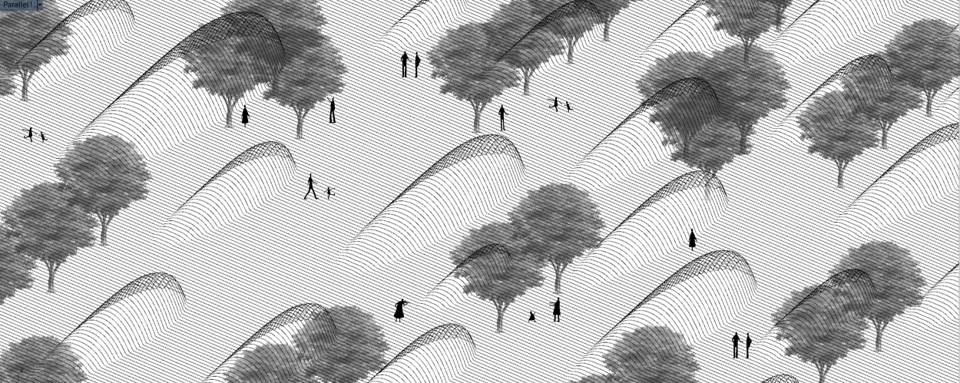
Landscape Architecture Studio I + II [21FL-22SP CCNY]
Cultivated Wildness
Spitzer School of Architecture
City College of New York
Fall 2021 - Spring 2022
Cultivated Wildness
Spitzer School of Architecture
City College of New York
Fall 2021 - Spring 2022
Central Park, a
canonical work of modern landscape architecture, has long been narrated as a
piece of nature reserved in the bustling modern metropolitan -- an escape, a
pastoral dream, an ultimate juxtaposition of the human and the nonhuman
realms.
"Central Park is not only the major recreational facility of Manhattan but also the record of its progress: a taxidermic preservation of nature that exhibits forever the drama of culture outdistancing nature." -- Rem Koolhaas, Delirious New York (1978)
The first-year Landscape Architecture unit challenges this long-held narrative by re-envisioning what an urban park could be in the 21st century -- a time of challenge, awakening, and opportunity: Anthropocene, climate change, sea level rise, pandemic, lockdown, social inequality, the Green New Deal, #BLM, #StopAsianHate, wildfire, ocean fire, subway flooding, nuisance flooding...
To address these complexities, the students will take on a series of rigorous investigations and conduct a sequence of design experiments throughout the fall and spring semesters. Each module (typically 3-4 weeks) will feed into the next and build complexity over time.
Conceptually, students will engage with emerging post-humanist cognition and more-than-human ontological concerns across fields, including landscape architecture. For example, with ideas found in multispecies ethnography and new materialism, students will question the illusory boundaries between nature and technology, ecology and machine, human and nonhuman, biotic and abiotic, living and nonliving.
"To think ourselves capable of causing 'the end of nature' is an act of great hubris, for it means forgetting the wildness that dwells everywhere within and around us."
-- William Cronon, "The Trouble with Wilderness" (1995)
Students will also be introduced to emerging landscape concerns and process-based design frameworks. Exercises are designed to explore the liminal space between the designer's intent and the reality co-produced by more-than-human agents. Students are asked to use landscape elements as media to cultivate living and dynamic relations between humans, nonhuman species and machines in the shared environment.
"Since a thing can't be known directly or totally, one can only attune to it, with greater or lesser degrees of intimacy…Since appearance can't be peeled decisively from the reality of a thing, attunement is a living, dynamic relation with another being."
-- Timothy Morton, "Attunement" (2014)
Eventually, students will explore landscape design as a long-term engagement with the land, developing process-based frameworks through ideas such as maintenance and adaptive management, and re-envisioning alternative modes of landscape practices outside the traditional business models.
"Central Park is not only the major recreational facility of Manhattan but also the record of its progress: a taxidermic preservation of nature that exhibits forever the drama of culture outdistancing nature." -- Rem Koolhaas, Delirious New York (1978)
The first-year Landscape Architecture unit challenges this long-held narrative by re-envisioning what an urban park could be in the 21st century -- a time of challenge, awakening, and opportunity: Anthropocene, climate change, sea level rise, pandemic, lockdown, social inequality, the Green New Deal, #BLM, #StopAsianHate, wildfire, ocean fire, subway flooding, nuisance flooding...
To address these complexities, the students will take on a series of rigorous investigations and conduct a sequence of design experiments throughout the fall and spring semesters. Each module (typically 3-4 weeks) will feed into the next and build complexity over time.
Conceptually, students will engage with emerging post-humanist cognition and more-than-human ontological concerns across fields, including landscape architecture. For example, with ideas found in multispecies ethnography and new materialism, students will question the illusory boundaries between nature and technology, ecology and machine, human and nonhuman, biotic and abiotic, living and nonliving.
"To think ourselves capable of causing 'the end of nature' is an act of great hubris, for it means forgetting the wildness that dwells everywhere within and around us."
-- William Cronon, "The Trouble with Wilderness" (1995)
Students will also be introduced to emerging landscape concerns and process-based design frameworks. Exercises are designed to explore the liminal space between the designer's intent and the reality co-produced by more-than-human agents. Students are asked to use landscape elements as media to cultivate living and dynamic relations between humans, nonhuman species and machines in the shared environment.
"Since a thing can't be known directly or totally, one can only attune to it, with greater or lesser degrees of intimacy…Since appearance can't be peeled decisively from the reality of a thing, attunement is a living, dynamic relation with another being."
-- Timothy Morton, "Attunement" (2014)
Eventually, students will explore landscape design as a long-term engagement with the land, developing process-based frameworks through ideas such as maintenance and adaptive management, and re-envisioning alternative modes of landscape practices outside the traditional business models.
Student Works
